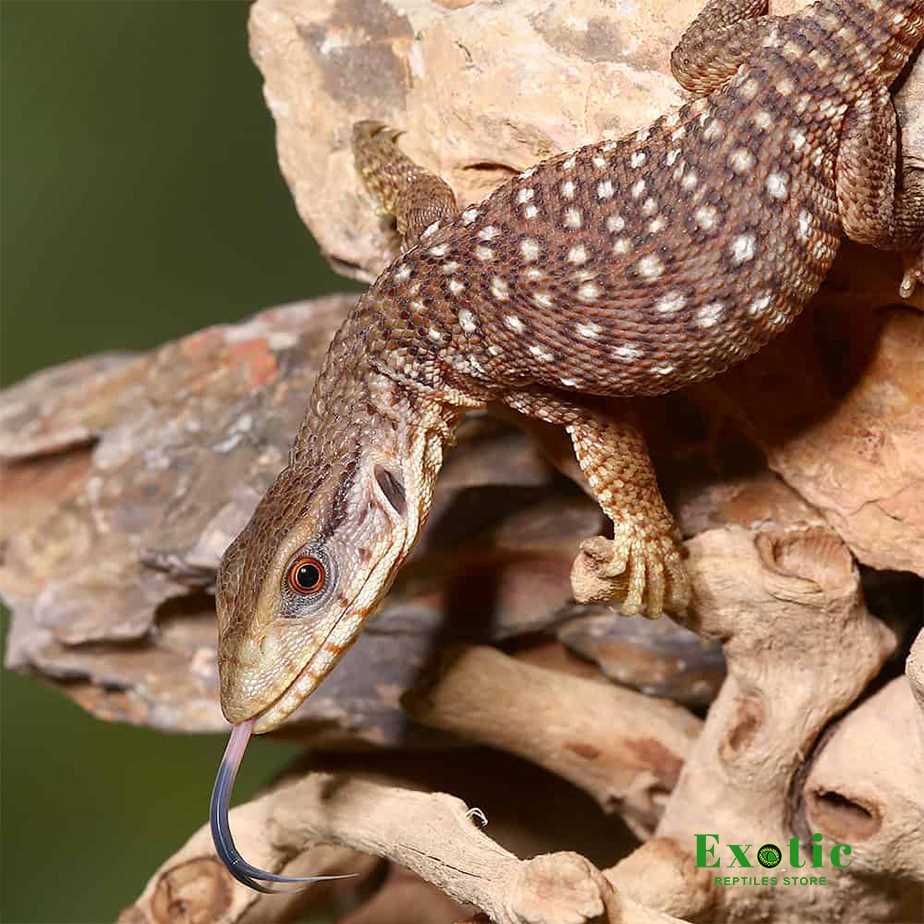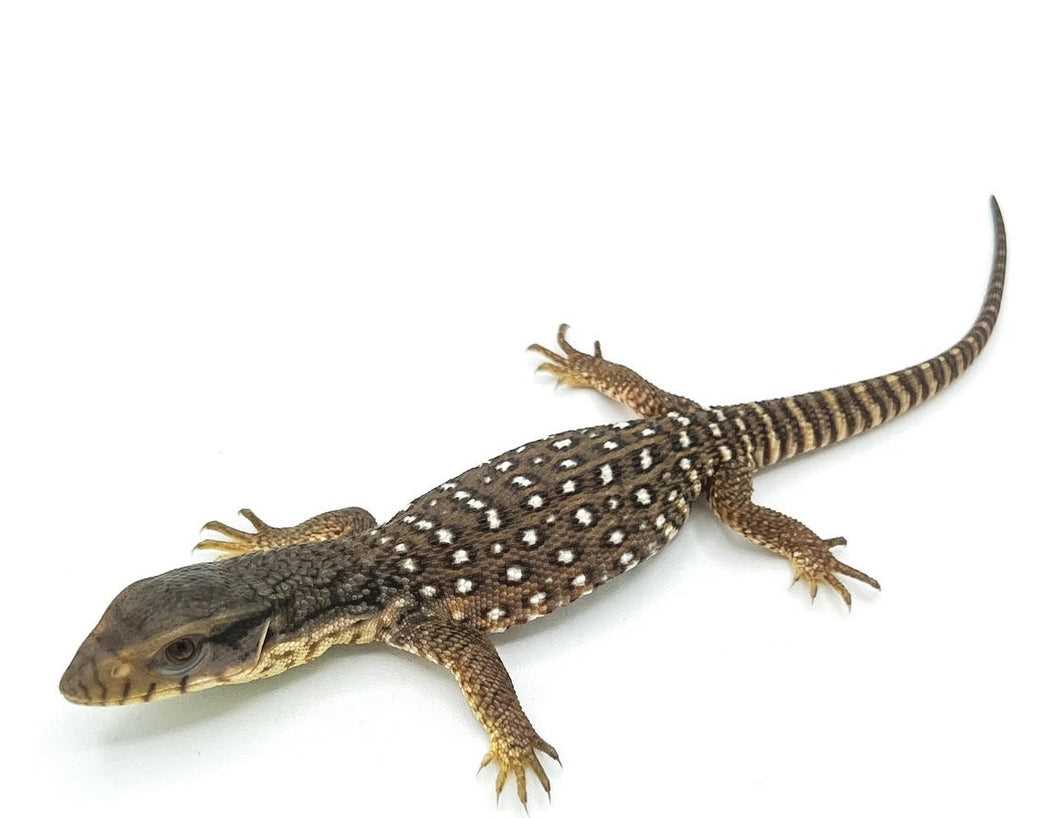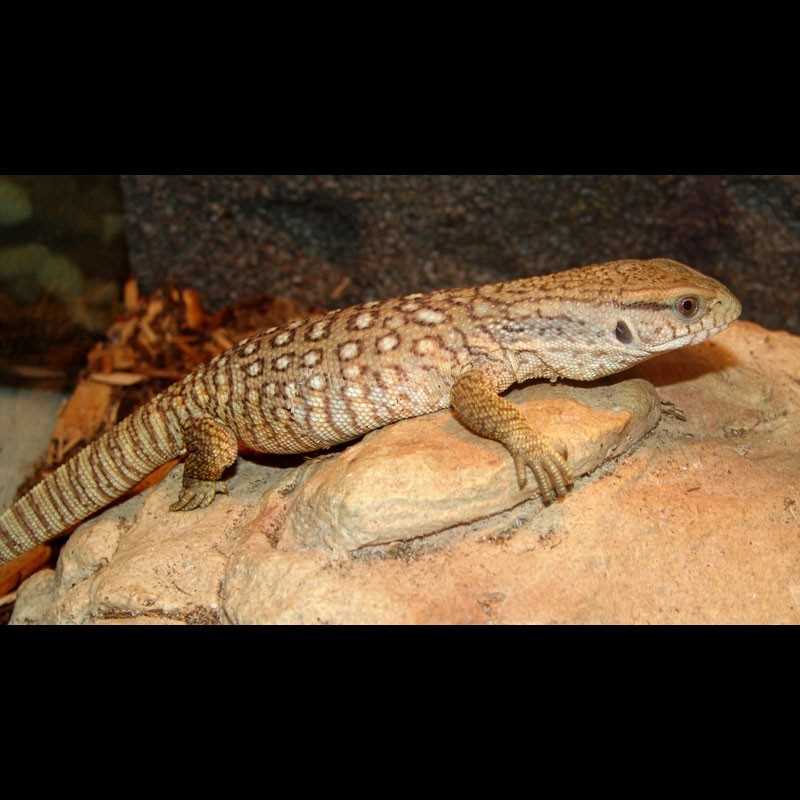Creating the perfect home for your baby Savannah monitor is crucial to its well-being. A spacious terrarium or cage with proper ventilation is essential to mimic their natural habitat. It’s recommended to provide plenty of hiding spots and climbing opportunities to keep them entertained and stimulated. You can use branches, rocks, and other reptile-safe accessories to create an enriching environment for your pet.
Caring for a baby Savannah monitor requires commitment and dedication. They are active and intelligent creatures that thrive on social interaction, so it’s essential to spend time bonding with your pet. Regular handling and gentle interaction will help build trust and strengthen your relationship. Remember to always wash your hands before and after handling your baby monitor to prevent the transmission of any bacteria.
What is a Baby Savannah Monitor?
Feeding a baby Savannah Monitor involves a varied diet of live insects, small rodents, and occasional fruits. They are opportunistic eaters and should be provided with a well-balanced diet to ensure their nutritional needs are met. Regular feeding and supplementation are essential for their growth and overall health.
Handling and socializing a baby Savannah Monitor is important to build trust and develop a bond with them. They can be skittish and defensive, so gentle and consistent handling is key. Gradually introducing them to human interaction and providing them with opportunities for enrichment can help them become more comfortable and sociable.
Baby Savannah Monitors have their own unique behavioral traits. They are curious and intelligent creatures that require mental and physical stimulation. Providing them with a stimulating environment, such as climbing structures and hiding places, can help prevent boredom and promote their well-being.
Training and enrichment are important aspects of caring for a baby Savannah Monitor. They can be trained to respond to cues and commands, and proper training techniques can help establish a strong bond between the pet and their owner. Providing them with toys, puzzles, and interactive activities can also keep them mentally stimulated.
Choosing the Right Enclosure for Your Baby Savannah Monitor
Another vital consideration is the setup of the enclosure. Baby Savannah monitors are from a savanna habitat, so it is essential to recreate that environment in their enclosure. Provide a substrate that resembles the natural habitat, such as a combination of soil, sand, and peat moss. Including some rocks, branches, and hiding spots will also help create a more naturalistic and stimulating environment.
To ensure proper humidity levels, mist the enclosure with water daily and provide a shallow water dish for your baby monitor to soak in. Aim for a humidity level of around 50-60%. Monitoring the humidity with a hygrometer will help you maintain the ideal conditions.
Creating the Optimal Habitat
Creating the perfect habitat for your baby Savannah monitor is crucial to its health and well-being. This pet lizard requires a spacious and secure cage or terrarium that mimics its natural environment.
Choosing the Right Cage or Terrarium

Creating an Ideal Environment
The habitat within the cage or terrarium should closely resemble the natural environment of a baby Savannah monitor. This includes providing a combination of heat, humidity, light, and hiding spots.
The temperature inside the cage should be around 85-90 degrees Fahrenheit on the warm side, and it’s best to provide a basking spot where the temperature can reach 100 degrees Fahrenheit. Use heat lamps or heating pads to achieve the desired temperature gradient. Additionally, provide a cooler side of the cage where the temperature is around 75-80 degrees Fahrenheit to allow for thermoregulation.
Make sure to provide a UVB light source to ensure proper calcium metabolism and vitamin D synthesis. This can be achieved using special reptile UVB bulbs that mimic natural sunlight.
Adding various hiding spots such as rocks, logs, and plants will give your baby Savannah monitor a sense of security and mimic its natural habitat. These hiding spots also provide enrichment and opportunities for physical exercise.
Maintaining a Clean and Safe Habitat
Proper hygiene is essential to keep your baby Savannah monitor healthy. Regularly clean the cage and replace the substrate to prevent the buildup of bacteria and parasites. Spot clean any waste and remove uneaten food to maintain a clean environment.
Ensure that the cage is escape-proof and that there are no small openings or gaps that could cause injury or allow your pet to escape. Regularly check the cage for any damages or signs of wear and replace or repair as necessary.
By creating an optimal habitat for your baby Savannah monitor, you can ensure its well-being and provide it with a comfortable and enriching environment. Do thorough research and consult with experts to ensure that you are meeting all the specific needs of this fascinating pet lizard.
Feeding Your Baby Savannah Monitor

Feeding your baby Savannah monitor lizard is an important aspect of their care. As a reptile, they require a specific diet to ensure proper growth and nutrition. It is essential to provide a varied diet that mimics their natural feeding habits in the wild.
1. Fresh Prey Items
A baby Savannah monitor’s diet primarily consists of live prey items. These can include insects such as crickets, mealworms, waxworms, and small roaches. It is crucial to provide appropriately sized prey items that are smaller than the width of your monitor’s head to prevent choking hazards. You can also offer small pinkie mice as an occasional treat.
2. Providing Supplements
In addition to live prey items, it is necessary to provide supplements to ensure your baby Savannah monitor receives essential vitamins and minerals. Calcium and vitamin D3 are crucial for bone health, and these can be provided in the form of a reptile calcium supplement. Dust the live prey with this supplement before feeding to your monitor lizard.
Note: It is essential to monitor the consumption of supplements and ensure you are not over-supplementing your pet, as this can lead to health issues.
3. Feeding Schedule
4. Water Requirements
Handling and Socializing
Start by allowing your baby Savannah monitor to become familiar with your presence. Sit near their cage and speak softly to them, so they get used to your voice. This will help them associate you with positive experiences.
Once they seem comfortable, you can begin to handle your baby Savannah monitor. Make sure you wash your hands before and after handling to prevent the spread of any bacteria. Start by gently picking them up from underneath, supporting their body, and keeping a firm but gentle grip.
Handling sessions should be short and gradually increase in duration as your pet becomes more accustomed to being held. Always monitor their reactions, as some lizards may become stressed or agitated if handled for too long.
In addition to handling, socializing your baby Savannah monitor can involve creating opportunities for them to interact with their surroundings. This can include supervised exploration time outside of their cage and providing stimulating toys or items to investigate.
By providing a secure and comfortable environment, introducing them to positive experiences, and handling them with care, you can help your baby Savannah monitor develop into a well-adjusted and sociable pet.
Healthcare and Veterinary Visits
Proper healthcare is essential for the well-being of your baby Savannah monitor. Regular veterinary visits are crucial to ensure that your lizard stays healthy and any potential issues are addressed promptly.
During veterinary visits, your monitor may undergo a thorough examination, including checking its weight, body condition, and overall health. The veterinarian may also perform various tests or screenings to detect any underlying health issues.
In addition to regular veterinary check-ups, there are several proactive healthcare measures you can take to keep your baby Savannah monitor in optimal health. Maintaining a clean and suitable environment, providing a balanced diet, and ensuring proper hydration are key factors in promoting a healthy lifestyle for your pet.
Regularly cleaning the cage or terrarium and providing fresh water are essential to prevent the buildup of bacteria or parasites that can harm your monitor. A proper diet consisting of appropriately sized prey items and a variety of insects is crucial to ensure your pet receives all the necessary nutrients.
Furthermore, providing proper UVB lighting and maintaining appropriate temperature and humidity levels in the enclosure are important for the overall well-being of your monitor.
Remember, early detection and prevention are key to maintaining your baby Savannah monitor’s health. By being proactive in their care and seeking veterinary attention when needed, you can ensure your pet lizard lives a long, healthy, and happy life.
Common Behavioral Traits of a Baby Savannah Monitor
Territorial Nature

Active and Inquisitive
Like many reptiles, baby Savannah monitors are highly active and inquisitive. They enjoy exploring their surroundings and investigating new objects. It is essential to provide them with an enriched environment that includes hiding spots, branches, and other forms of enrichment to keep them mentally stimulated and physically active.
Feeding Aggression
Sociability
Baby Savannah monitors are generally more sociable than adults. They can form a bond with their human caretaker and enjoy being handled and interacted with. However, it is crucial to handle them properly and gently to avoid stress or injury. Regular, positive handling sessions will help them become more comfortable and responsive to their caretaker.
Tips for Training and Enrichment
Training and providing enrichment for your baby Savannah monitor is essential for their mental and physical well-being. Here are some tips to help you provide a stimulating and rewarding environment for your reptile companion:
2. Gradual Introduction: Introduce your baby Savannah monitor to new experiences and environments slowly. This will help prevent stress and allow them to adapt comfortably to new situations.
3. Training Sessions: Train your baby Savannah monitor to respond to basic commands such as coming to you when called or climbing on your hand. Use positive reinforcement techniques like offering treats to encourage desired behavior.
4. Environmental Enrichment: Provide your baby Savannah monitor with a variety of objects and materials to explore and interact with in their enclosure. This can include branches, rocks, and hiding spots. Change and rearrange the items regularly to keep their environment interesting.
5. Feeding Enrichment: Make mealtime for your baby Savannah monitor more stimulating by using feeding puzzles or hiding food around their enclosure. This will encourage natural foraging behavior and provide mental stimulation.
6. Socialization: Allow your baby Savannah monitor to interact with other friendly reptiles under supervision. This can help them develop social skills and prevent loneliness.
7. Routine Veterinary Visits: Regular check-ups with a reptile veterinarian are important to ensure the health and well-being of your baby Savannah monitor. They can also provide guidance on proper nutrition and care.
8. Patience and Consistency: Training and enrichment take time and effort. Be patient with your baby Savannah monitor and maintain consistency in your training methods. This will help them learn and thrive.
By following these tips, you can provide a stimulating and fulfilling life for your baby Savannah monitor, enhancing their overall well-being and happiness as a pet.

I’m Lena Adams—a product of an unconventional upbringing in the African wilderness. My father, a daring explorer of African wildlife, sparked my fascination with reptiles, a passion that intertwined with the tragic loss of my mother during an expedition, leaving an indelible mark on my life. Driven to understand the creatures that captivated my parents, I embarked on my journey, sharing insights about reptiles, frogs, and lizards on my website. Through my explorations and conservation efforts, I honour my family’s legacy while seeking connections—to the creatures, nature, and the mother whose presence I yearn to understand.
